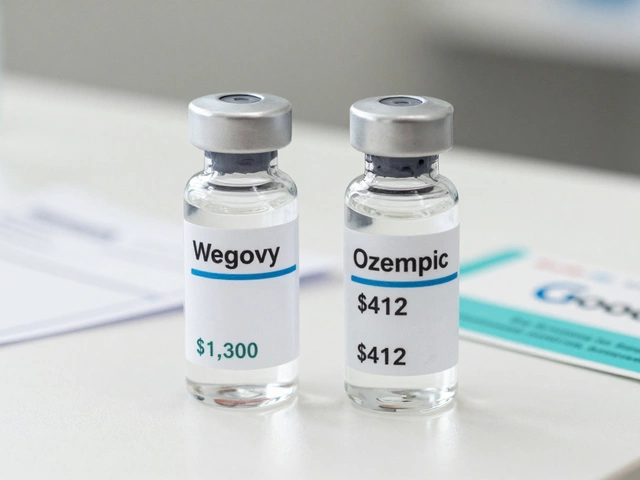Imagine walking into a hospital fully awake, chatting with the nurse, and walking out an hour later with barely a mark to show for it. Surgeries don’t always mean big scars and weeks on the couch. In fact, millions of people go through surgeries so minor, they’re home before lunch. If the word “surgery” makes your heartbeat skip, this article might surprise you. Not all surgeries are created equal—some are just blips on your calendar before you’re back to your usual routine.
What Counts as the Least Serious Surgery?
When doctors say “least serious surgery,” they usually mean minor, low-risk procedures. These are the types that don’t mess with major organs, big blood vessels, or deep tissues. Instead, these procedures deal with the skin, muscles just under the skin, or other shallow body parts. Most are done with local anesthesia (think numbing cream or shot) instead of full-blown sleep. The hospital term is ‘outpatient surgery’ or ‘day surgery’—meaning you can get in and out without sleeping overnight in a hospital gown.
The American College of Surgeons puts minor surgeries into this group: mole or cyst removal, wart excision, stitching small wounds, simple tooth extractions, ear tube insertion, or even a vasectomy. The main thing? There’s little chance of severe complications, the wounds are small, and the recovery is usually rapid. Most people get back to work or school within days—sometimes the very next day.
Here’s a handy chart for context:
| Common Minor Surgery | Average Duration | Anesthesia Type | Expected Downtime |
|---|---|---|---|
| Mole Removal | 20 minutes | Local | 1 day |
| Ingrown Toenail Correction | 15 minutes | Local | 1-2 days |
| Vasectomy | 30 minutes | Local | 2-3 days |
| Cataract Surgery | 20-30 minutes | Local/Sedation | 24 hours |
| Ear Tube Insertion | 10 minutes | General (kids), Local (adults) | 1 day |
Some people even call these ‘lunchtime procedures’. Sure, there’s always some risk—any breaking of the skin has a slim infection risk—but these surgeries are about as routine as it gets. The main point: no major body system is put on the line, which makes these procedures the true “lightweights” of surgery.
Why Do People Need Minor Surgery?
Oddly enough, these “least serious” procedures add up to loads of people every year. In the US alone, more than 60 million outpatient surgeries happen annually, according to the Centers for Disease Control and Prevention (CDC). Sometimes, it’s for medical reasons—like removing a suspicious mole before it can turn cancerous, or fixing an infected toenail. Other times, it’s cosmetic. Ever noticed someone returning from lunch break with a bandage on their nose or earlobe? Chances are, they just had something nipped off that’s been bugging them for years.
More than half of those outpatient surgeries focus on skin, eyes, or simple urology issues, all typically labeled as low-risk. Even dental offices offer minor surgeries for gum problems or wisdom teeth. Because these surgeries are so low stress, people often forget they’re actual operations. Yet, for those dealing with pain, embarrassment, or concern, the chance to wipe away a nagging issue in less time than it takes to watch a movie is a relief.
Some surgeries are done mainly to prevent problems down the road. Removing precancerous skin growths before they get nasty, draining an abscess before it gets bigger, or clipping a cyst in the early stage—these moves keep bigger trouble at bay. Kids with constant ear infections may have ear tubes put in to help avoid future trouble at school. Small fixes now can mean less drama later.
Don’t forget convenience, either. Most of the time, these surgeries don’t require the stress of a hospital bed, fasting, or family waiting outside in a nervous huddle. You walk in, sign a few forms, talk to the doc, and leave under your own power. It almost behaves like a glorified doctor’s visit with a few bandaids.

How Safe Are These Minor Procedures?
When you hear “surgery,” it’s easy to get spooked—even if it’s small potatoes. But here’s some good news: the safety record is stellar. The vast majority of minor procedures have complication rates under 1%. Some, like mole removals or wart excisions, are so safe that doctors teach them to medical students early in training. According to a large study published in the Journal of the American Medical Association, serious side effects from outpatient minor surgery happen in less than 1 out of 1,000 procedures.
The reasons? Simple tools, basic numbing shots, skilled doctors, and a focus on hygiene. After the procedure, there are instructions about keeping the area clean and what signs of infection to watch out for. These are practical tips everyone should keep in mind:
- Wash hands before touching the surgical wound.
- Change dressings only as directed by your doctor.
- Watch for swelling, redness, fluid (pus), or heat around the spot—early infection signals.
- Avoid heavy workouts or swimming until told it’s safe.
- If there’s any fever or weird pain, call your healthcare provider right away.
What really blows people’s minds: risks from minor surgery are often lower than everyday risks we accept. For example, the risk of an infection after a tiny surgical cut is about 0.5%. Compare that to the chance of getting food poisoning from eating out, which is almost ten times higher!
If you’re worried about scars, most of these minor surgeries use tiny stitches or special glue that fade fast. For kids, some docs even use dissolvable stitches so you don’t need a return visit. And although there’s no such thing as a “zero-risk” surgery, these days the technology and techniques are so refined that problems are rare. Most people say the only real hassle is remembering to keep the spot dry and clean until the next checkup.
What Are Examples of Least Serious Surgeries?
The world of minor surgery touches almost every part of the body. Here are a few of the most common ones, so you know which procedures fit the “least serious” label:
- Mole and cyst removal – Snipping off a growth that’s either annoying or potentially risky. Usually done in under half an hour.
- Ingrown toenail surgery – Clearing out a stubborn nail that won’t heal on its own, often for people with recurring nail problems.
- Simple dental surgery – Tooth extraction, especially for baby teeth or teeth that are loose or infected, is easily managed outside a hospital.
- Vasectomy – Blocking or cutting the vas deferens to prevent sperm from leaving the body. Fast, effective, and done with a local anesthetic.
- Wart, tag, or lipoma excision – Removing benign skin growths for comfort or cosmetic reasons.
- Ear tube insertion (myringotomy) – A quick fix for kids tortured by chronic ear infections. Small tubes help keep ear canals clear and avoid hearing trouble.
- Skin biopsy – Taking a tiny piece of skin to check for skin cancer or other problems. Quick, nearly painless, and super common in dermatology clinics.
- Cataract surgery – For older adults, this involves swapping a cloudy lens with a crystal-clear artificial one. Eye specialists have gotten it down to an art.
Notice a pattern? These all focus on small, surface-level fixes without going deep into the body. Most of them are so standard—you probably know someone who’s had one, maybe even yourself. And for every patient, the big win is a quick turnaround. Surveys show over 90% of people having minor outpatient surgeries rate their experience as “better than expected.”
Of course, there’s a psychological factor. Even if the operation is labeled “minor,” it doesn’t always feel minor to the person having it. Anxiety about surgery is normal; the trick is knowing what to expect, understanding the low risks, and having a doctor who walks you through each step. Most folks are amazed at how anti-climactic the whole thing is—“That’s it?” is a common reaction.

How to Prepare for a Minor Surgery—and Make Recovery Smooth
Here’s where you can stack the odds in your favor. Even if it’s not open-heart surgery, going in prepared and following aftercare advice can make a real difference. Doctors suggest a few basics before your ‘least serious’ procedure:
- If you take blood thinners or medicine that affects clotting, let your doctor know. Sometimes, meds should be paused.
- Wear comfy, loose clothes that are easy to take on and off, especially if your surgery is on your leg, foot, or arm.
- Don’t eat or drink if you’re told not to—most minor procedures with local anesthesia don’t require fasting, but double-check your instructions.
- Arrange a ride home if you might feel wobbly or the procedure involves sedation.
- Jot down all your medications and allergies for your surgeon—better safe than sorry.
After the procedure, the recipe for recovery includes rest, not picking at stitches or glue, and following wound care tips. Doctors sometimes recommend keeping the area dry, skipping workouts, or avoiding direct sun on the scar. If your cut was bandaged, usually the rule is: keep the bandage clean and change as directed. For pain, a little acetaminophen (paracetamol) usually does the trick—most don’t even need prescription painkillers.
One cool tip: If you’re prone to scars, talk with your doctor about special creams or dressings that can minimize marks. Silicone gels and sheets work wonders for many people, especially if you start using them after the wound closes. And if you’re ever worried something looks off—like redness spreading, pus, or the wound opens up—reach out to your doctor early, before it becomes a bigger issue.
Health insurance usually covers minor, medically-needed procedures, but check your plan if it’s a cosmetic fix. Many clinics will give you a breakdown of costs before you even say yes.
No surgery is ever totally trivial, but millions of people breeze through these “least serious” procedures every year. If you’re wondering about something that’s bothering you, it never hurts to ask your doctor if a quick fix is possible. With the right prep, a good doctor, and a few sensible precautions, minor surgery really can be as easy as grabbing a sandwich at lunch—bandage and all.





